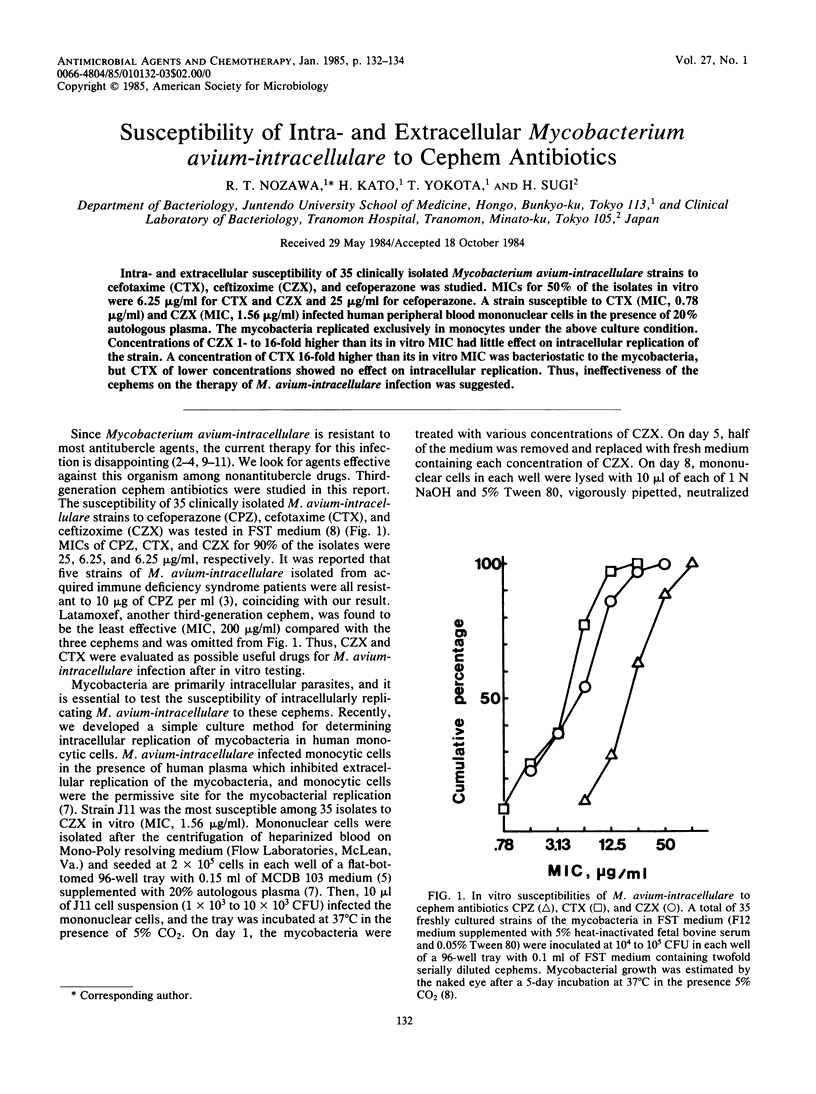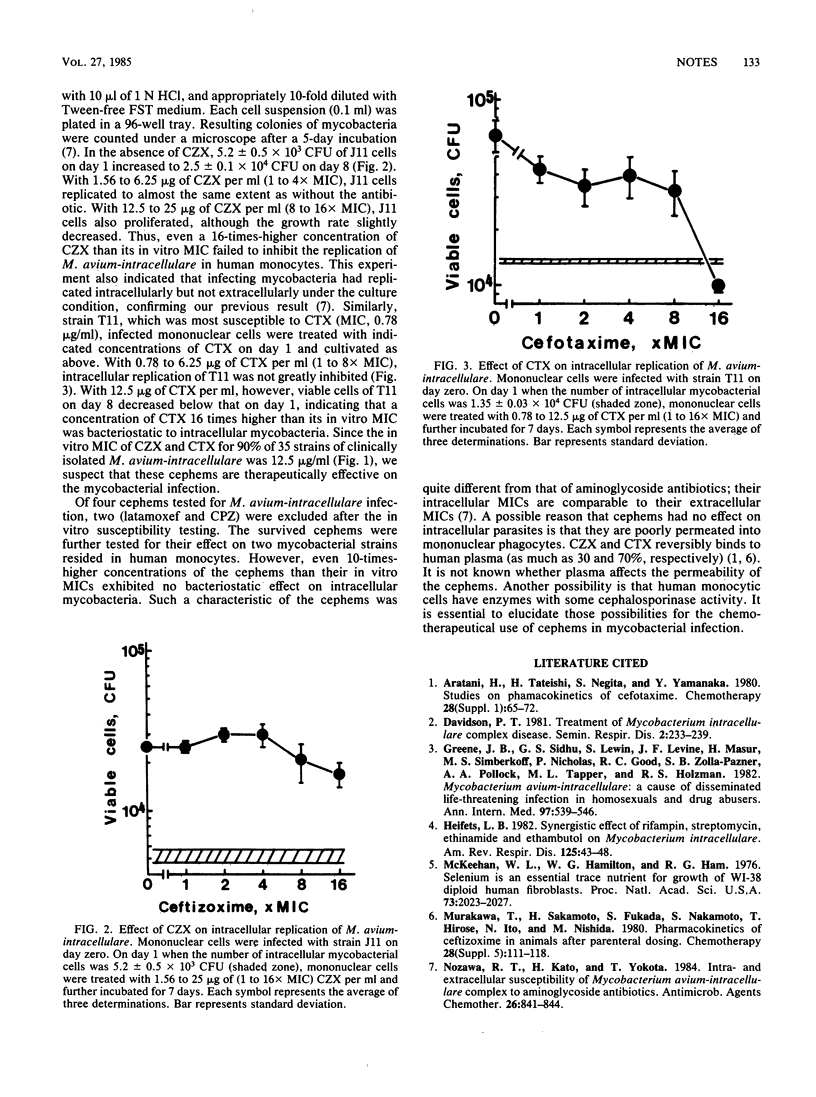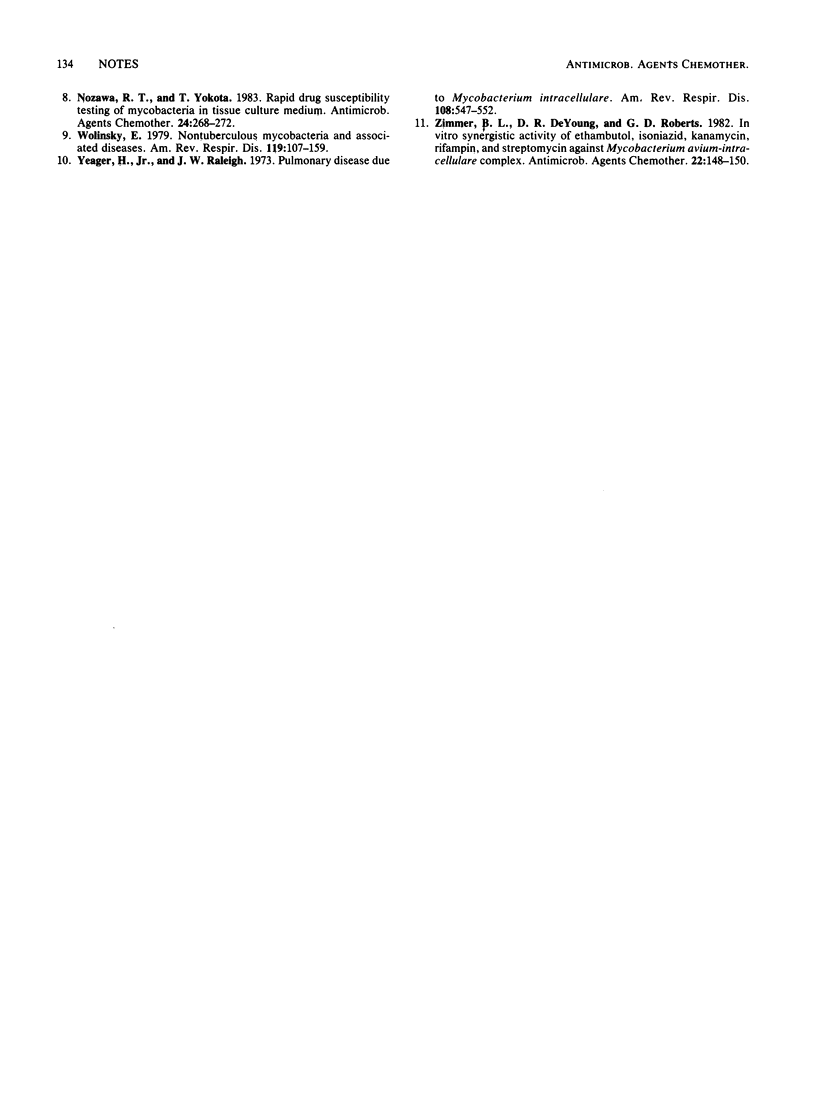Abstract
Intra- and extracellular susceptibility of 35 clinically isolated Mycobacterium avium-intracellulare strains to cefotaxime (CTX), ceftizoxime (CZX), and cefoperazone was studied. MICs for 50% of the isolates in vitro were 6.25 micrograms/ml for CTX and CZX and 25 micrograms/ml for cefoperazone. A strain susceptible to CTX (MIC, 0.78 micrograms/ml) and CZX (MIC, 1.56 micrograms/ml) infected human peripheral blood mononuclear cells in the presence of 20% autologous plasma. The mycobacteria replicated exclusively in monocytes under the above culture condition. Concentrations of CZX 1- to 16-fold higher than its in vitro MIC had little effect on intracellular replication of the strain. A concentration of CTX 16-fold higher than its in vitro MIC was bacteriostatic to the mycobacteria, but CTX of lower concentrations showed no effect on intracellular replication. Thus, ineffectiveness of the cephems on the therapy of M. avium-intracellulare infection was suggested.
Full text
PDF


Selected References
These references are in PubMed. This may not be the complete list of references from this article.
- Greene J. B., Sidhu G. S., Lewin S., Levine J. F., Masur H., Simberkoff M. S., Nicholas P., Good R. C., Zolla-Pazner S. B., Pollock A. A. Mycobacterium avium-intracellulare: a cause of disseminated life-threatening infection in homosexuals and drug abusers. Ann Intern Med. 1982 Oct;97(4):539–546. doi: 10.7326/0003-4819-97-4-539. [DOI] [PubMed] [Google Scholar]
- Heifets L. B. Synergistic effect of rifampin, streptomycin, ethionamide, and ethambutol on Mycobacterium intracellulare. Am Rev Respir Dis. 1982 Jan;125(1):43–48. doi: 10.1164/arrd.1982.125.1.43. [DOI] [PubMed] [Google Scholar]
- McKeehan W. L., Hamilton W. G., Ham R. G. Selenium is an essential trace nutrient for growth of WI-38 diploid human fibroblasts. Proc Natl Acad Sci U S A. 1976 Jun;73(6):2023–2027. doi: 10.1073/pnas.73.6.2023. [DOI] [PMC free article] [PubMed] [Google Scholar]
- Nozawa R. T., Kato H., Yokota T. Intra- and extracellular susceptibility of Mycobacterium avium-intracellulare complex to aminoglycoside antibiotics. Antimicrob Agents Chemother. 1984 Dec;26(6):841–844. doi: 10.1128/aac.26.6.841. [DOI] [PMC free article] [PubMed] [Google Scholar]
- Nozawa R. T., Yokota T. Rapid drug susceptibility testing of mycobacteria in tissue culture medium. Antimicrob Agents Chemother. 1983 Aug;24(2):268–272. doi: 10.1128/aac.24.2.268. [DOI] [PMC free article] [PubMed] [Google Scholar]
- Wolinsky E. Nontuberculous mycobacteria and associated diseases. Am Rev Respir Dis. 1979 Jan;119(1):107–159. doi: 10.1164/arrd.1979.119.1.107. [DOI] [PubMed] [Google Scholar]
- Yeager H., Jr, Raleigh J. W. Pulmonary disease due to Mycobacterium intracellulare. Am Rev Respir Dis. 1973 Sep;108(3):547–552. doi: 10.1164/arrd.1973.108.3.547. [DOI] [PubMed] [Google Scholar]
- Zimmer B. L., DeYoung D. R., Roberts G. D. In vitro synergistic activity of ethambutol, isoniazid, kanamycin, rifampin, and streptomycin against Mycobacterium avium-intracellulare complex. Antimicrob Agents Chemother. 1982 Jul;22(1):148–150. doi: 10.1128/aac.22.1.148. [DOI] [PMC free article] [PubMed] [Google Scholar]


